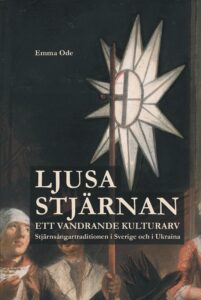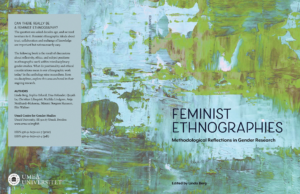 Den 16 november 2024 släppte den svenska kulturarvsinstitutionen ArkivCentrum Örebro län en ny bok om traditionen att sjunga med stjärna.
Den 16 november 2024 släppte den svenska kulturarvsinstitutionen ArkivCentrum Örebro län en ny bok om traditionen att sjunga med stjärna.
Författare är Emma Ode, arkivarie vid ArkivCentrum som även har ansvarat för det projekt med svenskt-ukrainskt tema som är grund för boken. Titeln är ”Ljusa stjärnan, ett vandrande kulturarv. Stjärnsångartraditionen i Sverige och i Ukraina.”
– För inte så länge sedan var traditionen att gå med ljusa stjärnan, eller att som stjärngossar ”gå Staffan” som den också kallades, väldigt vanlig i Sverige. Tyvärr är det numera väldigt få platser som traditionen lever kvar på. Den här traditionen, stjärngossetraditionen har en ett och ett halvt milleniums historia bakom sig och finns i olika modeller runtom i Europa, bland annat i Ukraina och i Polen, samt i finsktalande Finland.
I beskrivningen till boken står att läsa:
”Kultur vandrar över gränser, blandas med andra kulturella uttryck och tar gestalt på nya sätt. På så vis finns traditioner som vi upplever vara genuint svenska som samtidigt har stora likheter och gemensamma rötter med traditioner i andra länder.
I Sverige för inte så länge sedan vandrade stjärngossar med följe runt bland gårdar i juletid. De uppförde ett sjungande skådespel som byggde på Bibelns berättelse om stjärntydarna som följer den ljusa stjärnan till Betlehem och finner Jesusbarnet. En liknande tradition återfinns i stora delar av Europa, bland annat i Ukraina.
I den här boken presenteras historien bakom traditionen att gå med ljusa stjärnan och hur den gestaltar sig i Sverige och i Ukraina, och delvis även i Finland. Intervjuer med människor som själva har minnen av traditionen kompletterar de historiska nedslagen.”
– I Boken har Emma Ode intervjuat personer med såväl svensk som personer med ukrainsk bakgrund som bor i Sverige och haft korrespondens med ukrainare i Ukraina och som lever som flyktingar i USA och Norge för att samla in personliga berättelser om traditionen att gå runt med stjärna och sjunga för dörr. Boken visar hur kulturarv bevaras, förändras och sprids mellan områden. Det finns många likheter mellan stjärnsångartraditionerna i Ukraina och i Sverige, men naturligtvis också stora olikheter. Kultur är en process som pågår och verkar i dialog med människorna som utövar den och tidsandan i samhället. Boken visar även vilken politisk funktion kulturarv kan ha, både på gott och ont. Kultur kan tradera såväl rasistiska och fördomsfulla element som fungera som opposition i sin kontext. I dagens Ukraina som slåss för sin fortsatta existens under Rysslands anfallskrig fungerar återuppväckta traditioner och att visa ukrainsk särart som en motståndshandling. Och i Finland har stjärngossetraditionen, Tiernapojat, varit ett sätt att särskilja det finsktalande Finlands kultur i motsats till svensktalande Finlands traditioner, även om traditionen har förekommit i båda grupperna.
Boken ”Ljusa stjärnan” finns till försäljning via ArkivCentrum Örebro län, Nastagatan 11 F i Örebro. ISBN: 978-91-531-1194-8
Kontakt:
Emma Ode
E-post: emma.ode(at)arkivcentrum.se
 Den 16 november 2024 släppte den svenska kulturarvsinstitutionen ArkivCentrum Örebro län en ny bok om traditionen att sjunga med stjärna.
Den 16 november 2024 släppte den svenska kulturarvsinstitutionen ArkivCentrum Örebro län en ny bok om traditionen att sjunga med stjärna.
